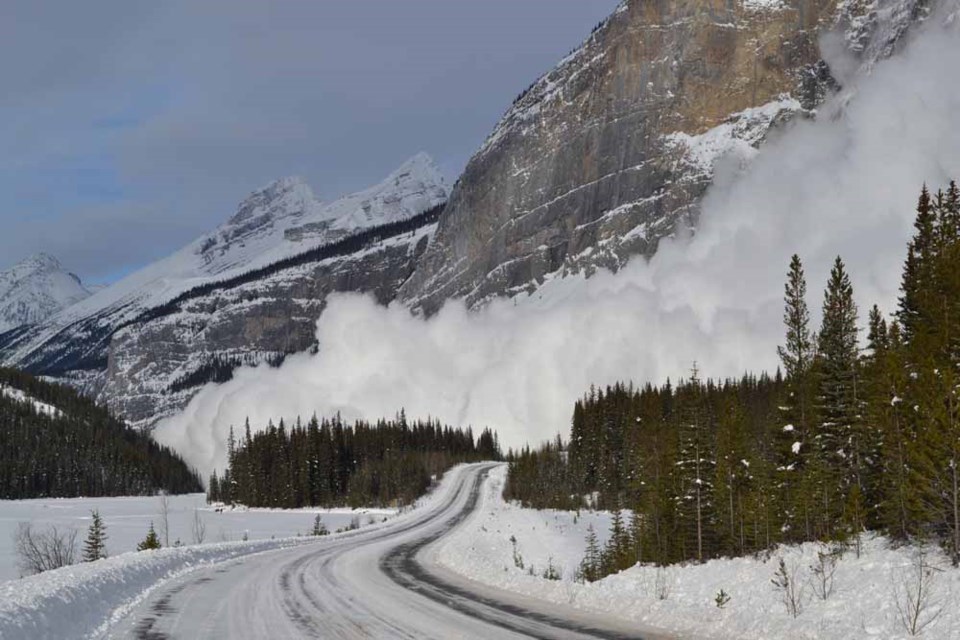
At 8 a.m., Jan. 16, a group of Parks Canada employees sat in an office planning the best way to bomb the mountains.
The morning began with a reviewāin painstaking detailāof the weather conditions. Thatās a common topic for the parkās avalanche control team, which meets every morning for a briefing.
On this day, however, the teamās discussion went a little further, with a review of the detailed plan for the dayās avalanche control work. Visitor safety specialist Steve Blake was in charge of the operation, and he went over the dayās agenda.
The team would start by meeting at a rendezvous point to build the bombs. When the helicopter arrived, the first āstrike teamā would load it up and begin the bombing. The other team would move out to the second rendezvous point, build more bombs, and when the helicopter landed to re-fuel, the team would sub out and tackle the second run.
After the briefing, Blake described in more detail just what the team does, first explaining that in a park with as many mountains as Jasper, avalanches are bound to happen.
So, to keep the public safe, Parksā avalanche control team closely monitors avalanche conditions, and responds when risks are too high.
Part of that response is triggering avalanches in a controlled manner so they donāt happen unexpectedly. The main way Parks does this is by dropping explosives in high-risk areas to set off slides on the teamās own terms.
āThere are a lot of paradoxical processes that happen with snow,ā explained Blake. āWhat the temperatures have been; how much snow is on the ground; what the wind has done to it; all affects how the snow changes on the ground over time.
āThis is why we have a meeting of the minds every morning; itās not as simple as āthis weather equals this avalanche condition.āā
This season, avalanche risks are particularly high, due to light snowfalls in November and December, compounded by Januaryās warm temperatures and big storms.
The team is responsible for the area north of the Columbia Icefields to Saskatchewan River Crossing, as well as Maligne Lake Road.
āThereās hundreds of potential avalanche paths in there,ā said Blake.
Following the morning briefing and the closure of Highway 93, the team met at its first rendezvous point, where the bombs were made.
A. L. Horton, another visitor safety specialist, explained the process. Standing next to a pickup truck loaded with materials, he went over the surprisingly straightforward process.
The well-trained and experienced team starts with bags of ammonium nitrate/fuel oil (ANFO), which looks a lot like a bag of bright blue fertilizer. The stuff is basically inert by itself, said Horton, and āthe only way you can make it explode is by having a strong explosive charge to set it off.ā
To achieve that, bomb makers stick a small primed charge into the bag. Then, they attach a wic, plunk the whole thing in a burlap sack marked āexplosives,ā and tie it with duct tape.
They create about a dozen such bombs for a single run, and throw in a few smaller hand charges to supplement them. Then, the whole lot gets loaded into the helicopter.
Next, the two bombers, the pilot and the observer squeeze in amongst the explosives and take off. They spend about an hour and a half in the air and hit about a dozen targets.
Once the helicopter swoops into view it hovers close to the mountain. A small black dot falls from it and disappears into the mountainside. Then, everybody waits.
Despite their terrifying power, most controlled avalanches start off surprisingly weak. After the sharp bang of the explosives, a spindly puff of smoke curls toward the sky and a small patch of snow shifts and begins to slide.
From a safe vantage point, avalanches donāt make much of a sound. But watching the growing cloud of snow tumbling down the mountainside, swallowing trees and ricocheting off the rocks, itās tough not to either shudder in terror or whoop with laughter.
Even the guys who have been triggering avalanches for decades watch with craned necks and big grins as the snow cloud barrels down the mountain and across the road.
Avalanches are measured on a scale from one to five, with one being harmless to people and five being big enough to take out a village. (Jasper doesnāt have slopes capable of producing a five.)
Blake said the goal is to never have a natural avalanche bigger than a one happen in the park.
If the conditions are controlled, however, bigger slides are fine, as evidenced by the size three the team set off early in the day, last week.
Along with the helicopter bombing runs, Parksā avalanche control team has another tool at its disposal: the āAvalauncher.ā
Avalaunchers are used for smaller-scale work, but that makes the tool no less impressive.
Used for clearing snow off roadside cliffs, the Avalauncher is essentially a long metal tube hooked up to compressed air. The team loads tiny bombs into the tube, cranks up the pressure, and blasts them into the cliffs.
The bombs hit with a sharp crack and a flash of orange, sending snow tumbling from the cliffs. Following a shot, the smell of acrid smoke lingers in the air; a burnt odour that signifies the end of a successful day of avalanche control.
Check back with the 51°µĶų in the coming weeks as we explore the other side of highway safety with Jasperās snow removal team.
Trevor Nichols
[email protected]
